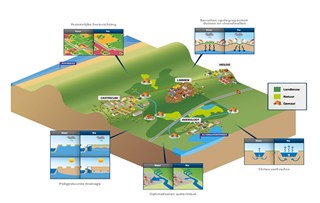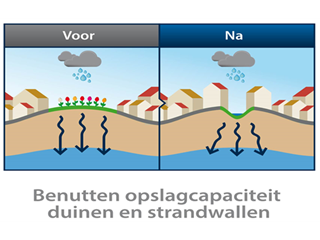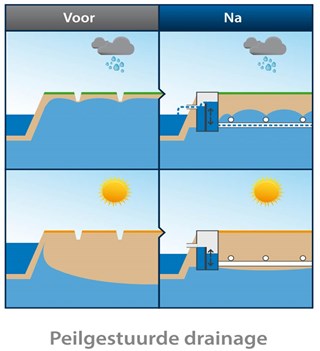The 'Double helix' for watermanagement
Future freshwater availability, The Netherlands
Freshwater supply in a polder North of Amsterdam is uncertain. To enhance the reliability of the system Acacia Water supported the decision and policy making processes concerning future water management. Because of pro-active stakeholder involvement, the outcomes are fully acknowledged and supported by users and managers.
The decision and policy making process applied is illustrated by means of a the “double helix”. The “double helix” is a graphical representation of the three step process. During the first step the relevance and urgency of the project were explained using projection of current and future freshwater availability. The relevance of a series of interventions was concretized into possible solutions in the second step. In order to recommend practical solutions, all ideas were evaluated with regard to the characteristics of the research site and the water requirements per land use type.
The project was commissioned by the local water board and a nature foundation. Herewith they set the first steps toward long term effective and sustainable water management. The complexity of the problem and the many rivalling interests made it quintessential to come up with a joint approach. The open dialogue allowed for bilateral understanding and an improved willingness for cooperation. The “double helix” concept also proved effective during the development of the Delta Vision of the water board.
 Groot Limmerpolder
Groot Limmerpolder
 Double Helix
Double Helix
 Using storing capacity of the dunes
Using storing capacity of the dunes
 Level controlled drainage
Level controlled drainage